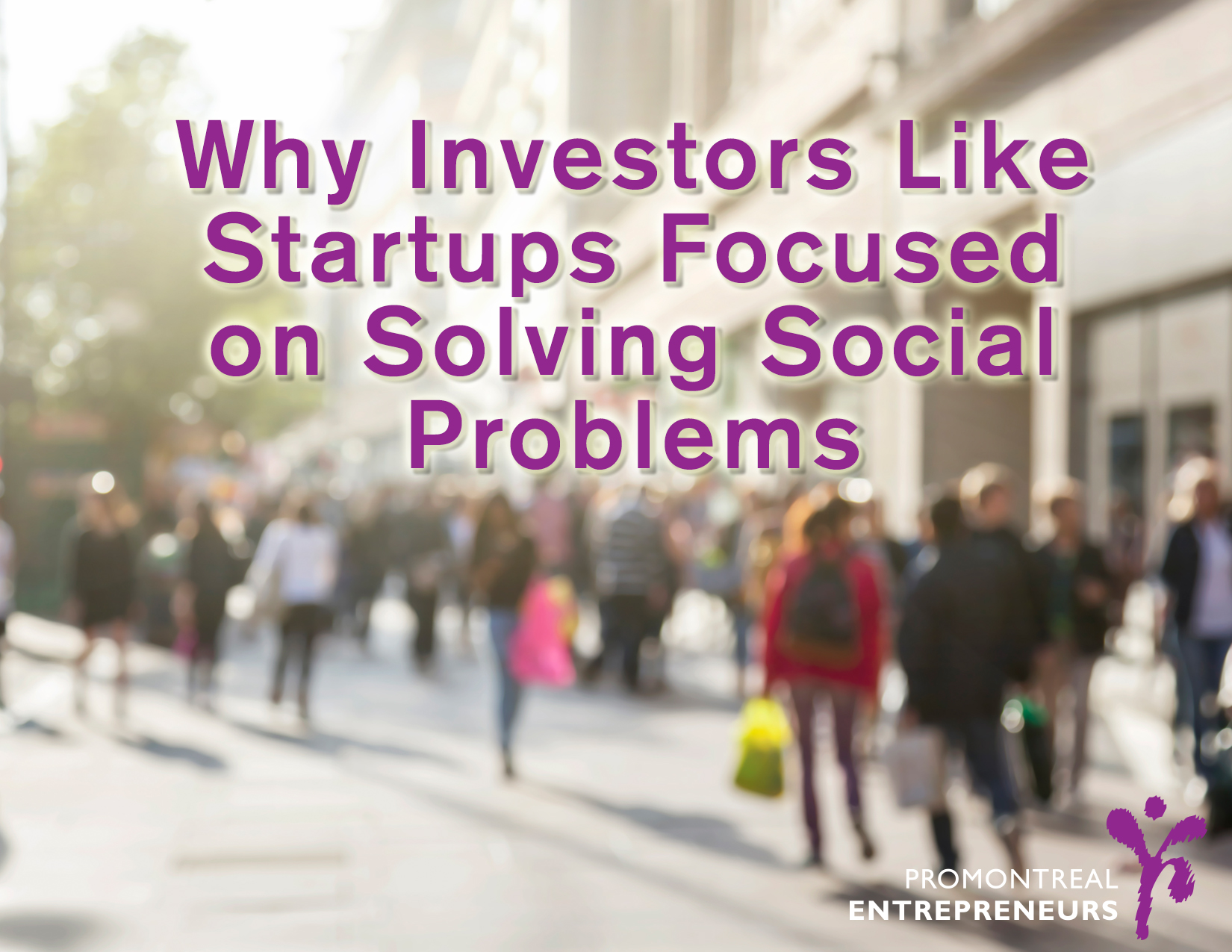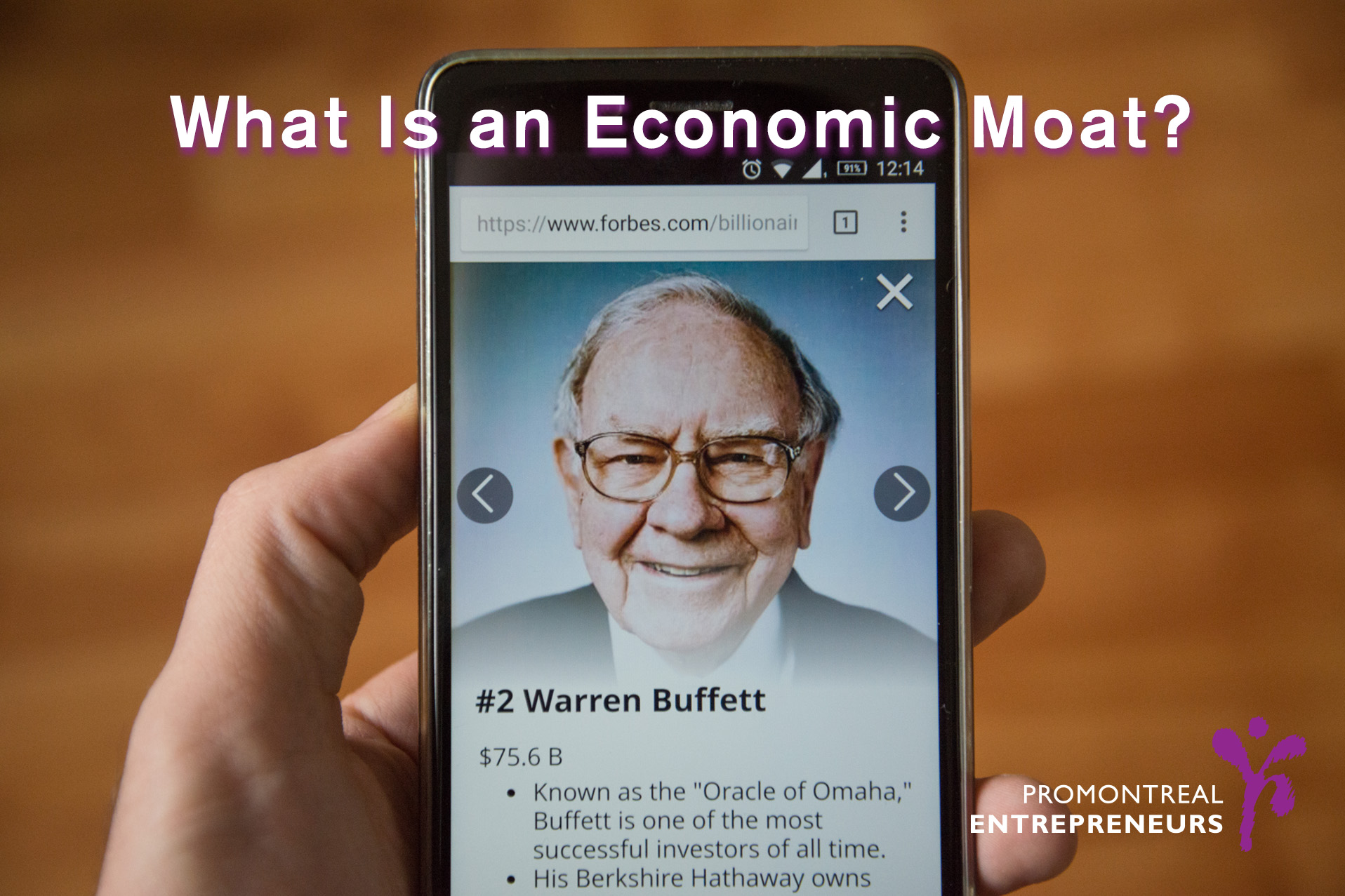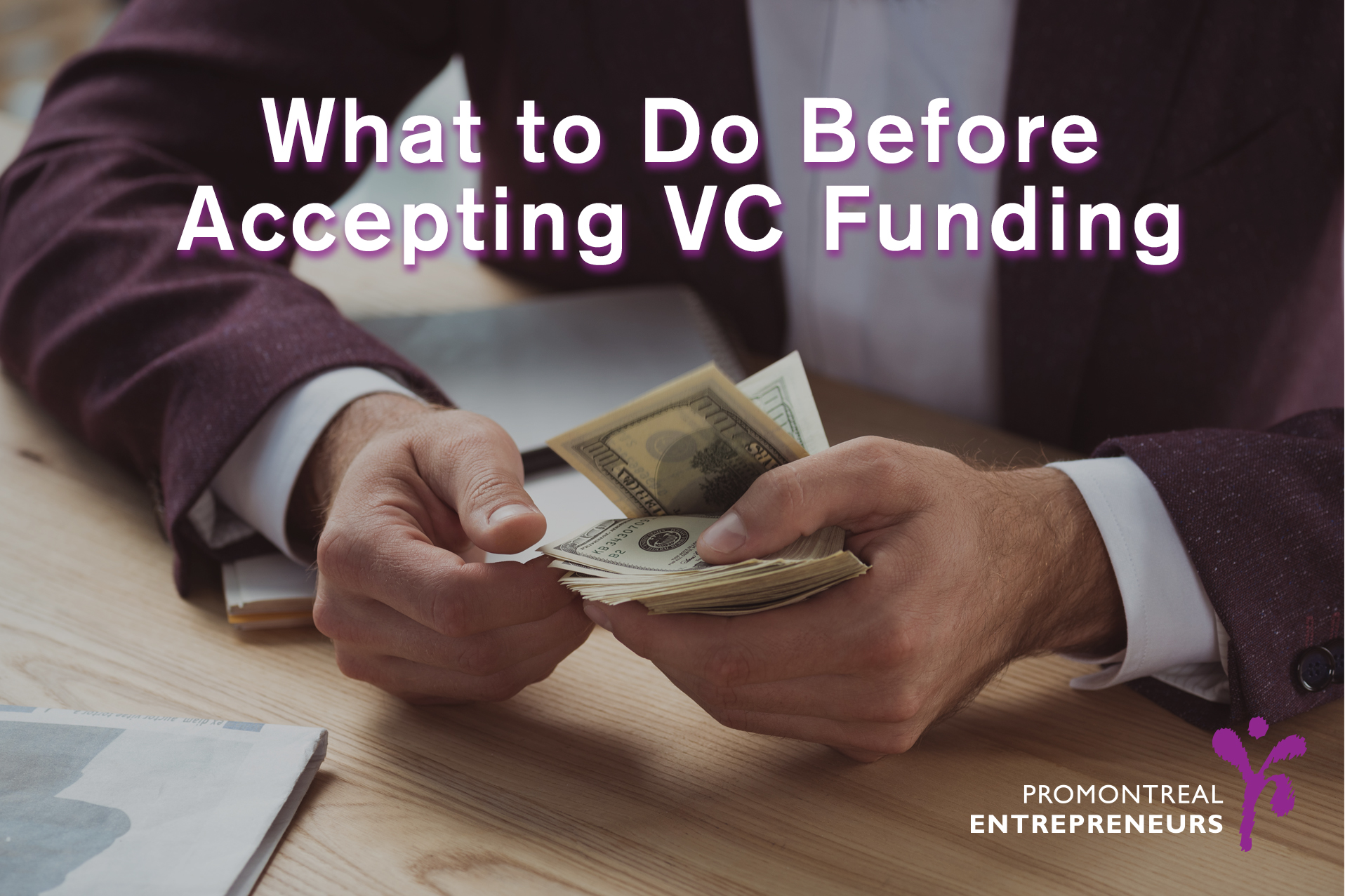Author Archives: Katherine Korakakis
Jewish Businesses Changing the World
Jewish Businesses Changing the World
Daniel Blumer Co-Founder Revols
Why Investors Like Startups Focused on Solving Social Problems
The social impact of businesses has been held to the highest of regards in the past decade. Part of the reason for that is millennials have grown up with a more socially responsible mindset than previous generations. Though this has now become today’s norm, many entrepreneurs have gone the extra mile by making solving social problems their main focus. Companies such as Thread International, TOMS, Belu Water, and CellInk are just a few example. With unfortunate social problems making news headlines, one thing is for certain, solving social problems has become what the corporate world would refer to as “good business”.
An uneasy relationship has always existed between investors and entrepreneurs when social problems were in question. If you planned on utilizing socially friendly practices the hope was that it did not excessively affect your profit margins, and if you’re main focus was solving a particular social problem the worry was that you wouldn’t be making enough revenue. All this to say that many investors were hesitant to put too much focus in such businesses. However, with changing societal climates, we are in the midst of a shift. What we see today is that investors no longer have to choose between money, and their values. Hence, the rise of sustainable investing. The reason for its rise in popularity amongst interested investors is simple. People want to make a difference, and figuring out which companies are truthful to their social initiatives has become easier to monitor.
Sustainable investing is a term for investment approaches that consider environmental, social and governance (ESG) factors and their impact. Point in fact, after the controversial era of banking secrecy, sustainable investing has come to the forefront and become one of the fastest growing segments in finance. It is an opportunity to make money and make a difference in the world. By acknowledging its importance and popularity, organizations have further facilitated and incentivized investments in companies focused on solving social problems. For instance, PME funded company Co-Power, identifies energy efficiency projects that generate, or are expected to generate steady, predictable revenue streams by either selling clean power or by reducing energy consumption.
With societal consciousness becoming of increased importance in today’s corporate culture, investors have begun to fish out companies promoting such agenda simply for positive PR. Genuine social impact companies integrate doing good into everything they do. Successful social impact ventures balance for-profit work with community-oriented resources. Failing to do so diminishes credibility and increases customer mistrust. Therefore, entrepreneurs should make a habit of working with institutions and platforms that help verify and certify social impact, examine their supply chain, look for like-minded investors, and build a team that understand the importance of its principles. Act on your beliefs instead of just talking about them.
Making the world a better place and making money can go together. Startups focused on solving social problems endure many challenges that other businesses might not. However, it is important to remember that this is a better time than ever before to appeal to investors. Assuming millennials continue to make social responsibility a priority when it comes to where they work, what they buy, and whom they support, it is safe to say that many investors out there are open and willing to contribute to a greater good.
How to Read an Income Statement

financials
For many new in the business world, reading an income statement can be a confusing and intimidating experience. However if you know where to look you will realize that it is not as intimidating as it may appear. Understanding an income statement is a very important skill to have for entrepreneurs as it aids with making sound business decisions. Basically, an income statement tells you how much money came into your company during a specific period, how much a business spent in order to generate income, and how much profit a business has after having paid all expenses. Here are a few points that will make income statements easier to understand.
- Income statements cover a period of time
Before you delve into reading the income statement, make sure to take note of the specific time period covered. Questions you should be able to answer for the said period include: What are the revenues of the company during the period? Have the revenues increased or decreased over the last few periods? What are the various components of cost? How profitable was the company during this period? What are the earnings attributable to a share or the Earnings per Share?
- Income statements follow a simple formula
Income statements may have slight variations, depending on the company. However, they all possess the same data. Essentially, total revenue, total expenses, and net income (Total revenue-total expenses= Net income). Additional information is simply added in order to give the reader a more detailed depiction of financial status.
- Don’t let the jargon throw you off
What can make income statements difficult to understand is wording. Keep in mind that businesses can use different words to describe the same concept. For instance, the term “sale” or “income” can be used instead of “revenue”. The word “expenses” can be used instead “costs.” “Profits” and “net income” are also interchangeable.
- Expenses are often split into different parts
Expenses tend to be broken down into components. Cost of Goods Sold is the direct cost attributable to goods sold. Selling, General and Administrative Expenses combines payroll costs, except for what has been included in labour costs. Depreciation and amortization are charges with regards to fixed and intangible assets that have been capitalized on the balance sheet over time. Sales & marketing, as well as Research & Development costs are also almost always included in income statements.
- Keep an eye for cash flow
Comparing an income statement to a cash flow statement is highly recommended. The reason for this is to see if the profits earned are supported by the cash coming into the company. High profits on an income statement paired with low cash flow can imply weak quality of earnings. Know your key drivers and manage them. Keep a careful eye on areas that affect cash flow: accounts receivable collections and inventory turnover. How are you doing compared to past performance and your peers? Watch key areas that affect profits, net and gross margins, labor and fixed asset utilization. Though this is more acceptable with start-ups since they likely have to make substantial inventory investment before collecting from customers, this is something that should improve over time.
- Take note of the profit margin and earnings per share
The profit margin will give you an indication of the percentage of revenue that is left for shareholders after expenses are paid. Earnings per share will tell you the portion of earnings you would be entitled to if you owned one share.
Income statements can be very intimidating if you are a first-time business owner. If you are an entrepreneur needing help with your financial statements, remember that some aspects of running a business are not worth saving money on. There’s no need to turn yourself into a CPA, but you must be able to read financial statements, talk with better qualified financial people and assess your company’s performance.This will lower your stress level and get the job done efficiently.
PME Mentor: Nancy Cleman

Mentorship is at the heart of PME’s success. On this 18th anniversary, it would only be appropriate to give thanks to our mentors. Our mentors spend countless hours helping our entrepreneurs reach their full potential. We recently got the chance to catch up with our longtime mentor, Me Nancy Cleman. Nancy is a member of the Quebec Bar and the law society of Upper Canada. Over her years of experience, she has provided legal advice to a variety of corporate and commercial clients, including a range of industries such as software, fashion, film and services for the elderly. Nancy is also an accomplished speaker and author. Here are her thoughts on mentorship, and why it matters.
Q: What aspects of mentorship do you enjoy most?
A: What I enjoy most about mentorship is being introduced to entrepreneurs and learning about their visions. Speaking to them and offering guidance businesses they are seeking to build is an essential part of being a mentor. I enjoy offering perspective and working collaboratively with entrepreneurs.
Q: How can an entrepreneur make the best out of their relationship with their mentor?
A: The entrepreneur can make the best of the relationship by respecting the relationship that is being built with a mentor. As mentors, we get many calls, however often times there is no follow up. The relationship of mentor and mentee is one of respect and trust. Mutual trust and respect is the only way of getting the work done in an efficient manner.
Q: What advice would you give an entrepreneur thinking of working with a mentor?
A: It is important to listen and to be clear with the facts. Thank the mentor for his or her time. If you have an appointment then keep it or tell the mentor, you cannot make it. Mentorship is a rewarding relationship for both parties. As a mentor, I benefit from the opportunity to learn new things and share my experiences.
Our mentors are passionate people dedicated to helping others. With their help, entrepreneurs have been able to reach great heights. Thanks to the efforts and unwavering dedication of professionals like Nancy, we look forward to what the next 18 years have in store for PME.
What Is an Economic Moat?
The term economic moat, coined and popularized by Warren Buffett, refers to a business ability to maintain competitive advantages over its competitors in order to protect its long-term profits and market share from competing firms. Imagine McDonald’s without cost, convenience and golden arches, Nike without technological and trademarked innovation, or Amazon without its timely customer service innovations. They would be relatively unpopular companies struggling to survive in their respective industries. Business mogul, Warren Buffet has introduced the world to many of his lifelong lessons over the decades. One of the lessons that seems to have stayed relevant throughout the years is related to the coined term, “economic moat”.
As the age-old saying goes: Being the best is great because you’re number one, but being unique is greater because you’re the only one. Buffet has explained the importance of economic moats specifically when describing his investment strategy. His strategy centers on companies with strong economic moats, as they are more likely to withstand their competitors, and remain successful and unique. A company having a competitive advantage that further differentiates it from the competition will help through the highs and lows of operating a business. In its most basic form, a company without an economic moat is like a movie without an engaging hero, or storyline. In such a situation, there would be no way of creating a loyal consumer following, and subsequently no way of overcoming challenges that arise over time. On the other end of the spectrum, companies with competitive advantages can be threatened by competitors who replicate their methods. Establishing economic moats can therefore help companies protect long-term profits.
Thankfully for today’s business leaders, Buffet didn’t simply coin a theory-based term that required a bunch of scholarly analysis. The concept of building economic moats is a tangible one that can be leveraged through different business strategies. For instance, economic moats can be achieved in five ways: cost advantages, the network effect, high customer switching cost, efficient scale and intangible assets. The way you choose to build your economic moats all depends on the nature of your business. Think about what would be a good fit for the strategy you plan to execute. Buffet emphasizes the economic moat as an institution. It is not the mere elements that customers will like. Companies that build moats carve them around their businesses to keep competitors at bay. For instance, people loved Coca-Cola 50 years ago, and it’s fair to assume that they will 50 years from now. This is because Coca-Cola utilized the five sources of economic moats in order to create a loyal consumer base.
Let’s use the example of low-cost advantage. Suppose you have decided to make your fortune by running a lemonade stand. If you buy lemons in bulk once a week instead of every morning, you can reduce your expenses by 30%. This allows you to undercut prices of competing lemonade stands. While profits would increase, it wouldn’t take long for competitors to notice your method and replicate it. However, suppose you develop and patent a juicing technology. This technology would allow you to get 30% more juice out of the average lemon. This time, it would be a lot more difficult for the competition to duplicate. In this example, your economic moat is the patent that you hold on your proprietary technology.
The nature of capitalism is that others will want to come in and take what you have built. The goal for every business should be to build a durable fort around its castle. The goal is to protect it from any attack that would come from the competition. Sometimes an economic moat is having more talent, other times it’s establishing legally protected patents. Just remember to remain patient. You should stay persistent because it may even take a few tries until you get your strategy right.
6 Tips for Reading an Income Statement
The income statement is one of three financial statements that you need to become familiar with (the other two are balance sheet and cash flow statement). Understanding an income statement is essential in order to analyze the profitability and future growth of your business however reading an income statement can be intimidating to many people. Especially, if you’re at the early stage of starting your first business. To make the process slightly easier for you, here are 6 tips you should consider while looking over any income statement. It may not be as difficult or as confusing as you think it is.
1. Every income statement follows a simple formula
There is one formula that every single income statements follows:
Revenue- Expenses= Profit.
2. Income statements cover a period of time
The income statement will inform you of the amount your business has made over some time. usually, The statement will represent how much was made over a month, a quarter or a year. The “year-to-date” reflects business activity since January 1 to the present date (usually end of month).
3. Multiple names for one item cause complexity
Don’t let the financial jargon throw you off. Confusion can stem from the vocabulary used in in statements. People can use different terms to describe the same things. For instance, the words “sales” and “income” can be used interchangeably, as opposed to revenue. The term “profit” can be used instead of “net income”. “Expenses” are sometimes called “net income”.
4. The breakdown
Often times, expenses are split into multiple parts. Furthermore, profit is calculated at interim levels. For example, expenses will often be broken down into revenues, cost of goods sold, gross margin, selling, general and administrative (SG&A), and profit. Cost of goods sold are costs directly related to the products sold. Materials bought to make a product fits within this category. SG&A are costs not directly related to the making of the sold good. For example, salaries and office supplies are calculated for this.
5. Gross margin percent should be relatively constant
Gross margin is revenues less cost of goods sold. Also referred to as gross profit, gross margin is the money you receive from the products and services you sell, minus what it cost you to deliver them. It is essential because that the cost of goods sold move with revenue. The gross margin percentage is your gross margin divided by revenue. It should remain relatively constant over time. Any dramatic change with this regard should be seen as a red flag.
6. Dollars spent on SG&A should be relatively constant
Any significant and abrupt change in SG&A should be considered as alarming. It should remain constant overtime, and all dramatic and unjustifiable change should be looked into.
Understanding how to read an income statement is important, as it summarizes the overall financial health of your business. Not only is it simple once broken down, there are also many tools available online for you to deepen your knowledge on the matter.
What to Do Before Accepting VC Funding
All start-up investors are not the same. Struggling entrepreneurs are often so happy to get a funding offer that they neglect the recommended reverse due diligence on the investors. Taking on equity investors to fund your company is much like getting married, it is a long term relationship that has to work at all levels. Investors will conduct due diligence and have a number of questions about your startup . But it is equally important that you understand the venture firm and the individual venture capitalist or angel investor who is considering an investment in your company. Though likely tempted to accept more capital, there are certain things all entrepreneurs must consider before accepting VC funding. More money is great, but weighing what this can imply for the future of your startup is crucial. In order to avoid accepting an investment you will regret down the line, here are a few things you should do before accepting VC funding.
- Think about whether your investor can offer more than just a check
It is crucial that you research VCs thoroughly before you submit your pitch deck. Every venture capitalist has an investment thesis, strategy and approach to making decisions. If your business is technological, seek venture capitalists who help entrepreneurs in the tech field. Likewise, seek VCs who fund businesses in your stage of development whether it is a startup or an expansion. Having more capital is great, but think about other attributes that can benefit you long-term. Your research will help you determine if your business and team are aligned with the venture capitalist’s process.
You should ask about your investor’s investment track record. This is a follow-on about domain expertise and the experience of the specific VC. What are they most proud of? What was their contribution to the success of startups? This is also a way to identify other CEOs that have worked with this VC and get their perspective about the contribution the VC. Also, all investors do their due-diligence about a startup before investing. Entrepreneurs should be doing the same regarding investor. Reverse due-diligence is a process whereby entrepreneurs seek to validate the track record, operating style and motivation of their potential partner.
-
Analyze the terms of the investment
If a VC plans to embark on the journey with you, make sure you understand what his intentions are. Read the contract terms carefully. Have an experienced third party review the conditions of your partnership. For instance, it is important to know how involved they plan to be in the decision-making, and the stake they want to take. If a VC plans on taking a board seat, you want to make sure they will add value. Making sure you have the best people at the table is important.






